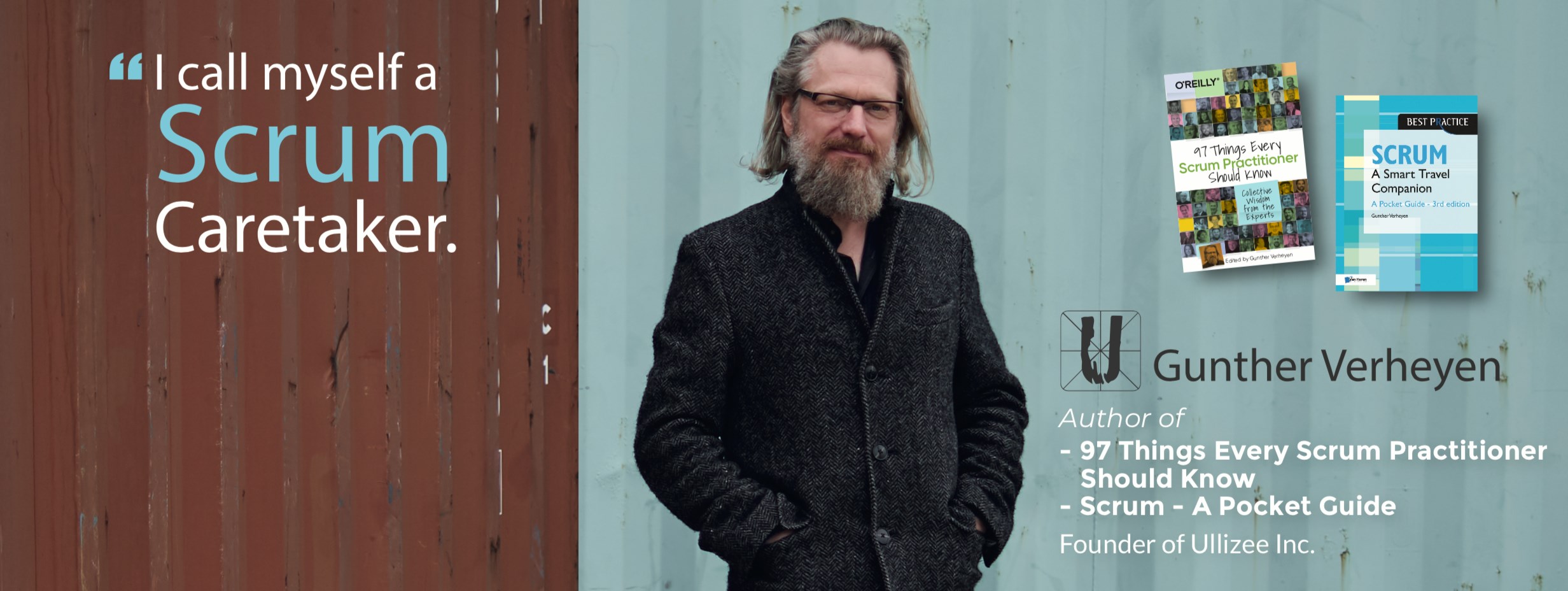This article is a review of “SCRUM – A Smart Travel Companion” by Gunther Verheyen.

As I take along quite some books to be read on my daily commute, one little book often gets stuck behind other books, my work laptop and lunchbox in my backpack. And as I move big things from my backpack, this little book often tags along and ends up in all different places in my apartment. I spot it when I am cleaning my apartment and put it back in my backpack. “Here ya go, little fella.”
I am talking about “SCRUM – A Smart Travel Companion” by Gunther Verheyen. It is a ‘pocket’ guide, alright. But don’t be deceived by its looks! It packs quite a punch in providing great insights in the Scrum framework.
Gunther Verheyen is quite a famous name in the Scrum discourse. There are quite some articles written by his hand and he has a big role within the community. In this little book, the self-proclaimed ‘Scrum Caretaker’ provides as in depth look at the Scrum framework, giving a lot of focus on the purpose and history behind the framework.
It’s very useful for those starting their Scrum journey, but speaking as being a bit more seasoned, I can heartily recommend for all agile professionals to re-read it every once in a while. The power in this book lies in ‘framing’ the framework with context (why are we using Agile and Scrum again?). And therefore, serves as a very welcome reminder. Scrum is a means to an end, to reach a ‘state of agility’. And as you are facing day-to-day challenges as an agile professional, it’s good to go through the processes and underlying principles again to reassess your course. Because that what the book also implies – that it is a companion. Like taking Gunther along on my daily commute, sparring as we go. Recently I have been struggling with subjects as deadlines and personal rewards. Re-reading about the properties of agile always strengthens my resolve in facing issues where the old industrial paradigm is creeping up.
The book is clearly, ‘humanly’ and wittily written. It takes an afternoon (or a few of my daily commutes) to finish. The little book also touches upon subjects related but not vital to mastering Scrum, such as lean principles and Kaizen, and gives novice readers an insight in what lies beyond adapting the framework.
How does the little book do, compared to Hiren Doshi’s “Scrum Insights for Practitioners”? There is quite some overlap, but as Doshi’s book is more descriptive in how to apply the framework, Verheyen’s book is providing a through insight in the ‘why’s’ behind the framework. Both books provide very welcome insights and that makes this book invaluable for those trying to understand applying the Scrum framework.
When you have the time, check out Gunther Verheyen’s YouTube Channel. I find his video’s very insightful, because he talks about Agile and Scrum as an evolving framework and is one of the active, leading voices in the discourse. His articles and video’s give a good view of his opinions and are worth listening to by all interested in Agile and Scrum. I am particularly fond of his video’s regarding “What it means to humanize the workspace”.
(Also, if you are reading his pocket guide, you can also listen to him reading this book.)
Conclusion: A great read for both beginning and advanced Agile professionals for understanding and refreshing the ‘why’s’ behind the Scrum framework. ⭐⭐⭐⭐⭐
